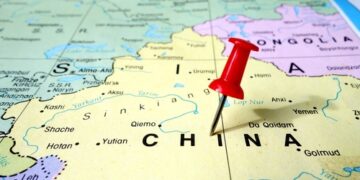Mooring is a dynamic and challenging operation onboard that requires high level of awareness. Communication among the different parties play a key role and every leader onboard should acknowledge that each crew member is different and that newer members of the mooring party might be inexperienced and afraid to ask questions.
The mooring and unmooring of any vessel are integral parts of the berthing / unberthing operation while in a port. The ship is secured with the use of lines (ropes, wires or combination) to the terminal or dock.
As it is understood, the environmental conditions play a significant role to overall safe mooring / unmooring of the ship while berthing/unberthing and while port stay. The lines that will be used in respect of size, number and strength should be applicable for the vessel. The applicability is determined by the type & size of the vessel and the environmental conditions used during the initial assessment during vessel’s construction.
As per MSC.1175, IMO uses the Equipment Number calculation to determine the number, size and strength of the lines, while for tankers, OCIMF has introduced through MEG-4 a different approach using stricter environmental conditions. However, for ships constructed after 1-1-2024, IMO revised the MSC.1175 with revision 1.
The revised circular includes calculation practices for ships with EN>2000 and not standardized values (as previous version). As the lightest ballast draft should be considered for the calculation of the side-projected area, the values calculated are higher than those of previous version (approaching the values calculated with MEG-4).
However, despite the fact that mooring/unmooring operations are a common operation on board, related incidents still occur, many of which include serious injury onboard. There are 3 types of mooring incidents: related to Equipment failure (which are the viewer related to other 2 categories); related to line breaking for any reason; related to no parted lines which have jumped/slipped off drum ends/bitts.
Almost over 90% of incidents concern the last two categories. Industry has made significant efforts to address the issue, however, there is still need for improvement. For example, until recently it was expected from ships to have some areas on the deck colored as snap-back danger zones. However, it took a number of serious incidents to realize that this was not a safety zone and address all mooring deck as hazardous area.
In addition to industry’s efforts, operators have also focused on safe mooring operations, requesting from 3rd parties (mostly line manufacturers) to be involved. At the same time, IMO and other stakeholders (OCIMF, Intertanko, P&Is etc) have revised their documents and best practices to support such operations and minimize the risk of incidents and their concerning consequences, i.e. injuries damages etc.
In that regard, seafarers involved in mooring operations should be given instruction on the specific equipment and mooring configurations used on the vessel. Ship operators should make sure that there are enough crew members available to do the task safely. Personnel should never stand in the bight of a rope or near a rope under tension, and they should treat ropes on drums and bollards with the utmost care.
Detailed familiarization should take place to all new joining seafarers regarding the installation, use and hazards related to permanent and loose mooring equipment. Based on the risk assessment, appropriate control measures should be in place.































































